This is a post written by Richard Lowe who is an Organ Consultant and Organist . He had a very exciting and interesting story to share from Christ Church West Didsbury where he works as Director of Music. So we’ve asked him to write this post for us.
Christ Church West Didsbury is rather unusual amongst English parish churches as its pipe organ is elevated at the west end of the building rather than the more common east end location. This position has always been favoured by continental organ builders as the best place acoustically for an instrument.
Indeed, until the Oxford Movement gathered traction in this country in the mid-1800s, the majority of instruments were placed at the west end, often in a gallery and replacing the local ‘west gallery band’ who often found a new role in the village pub!
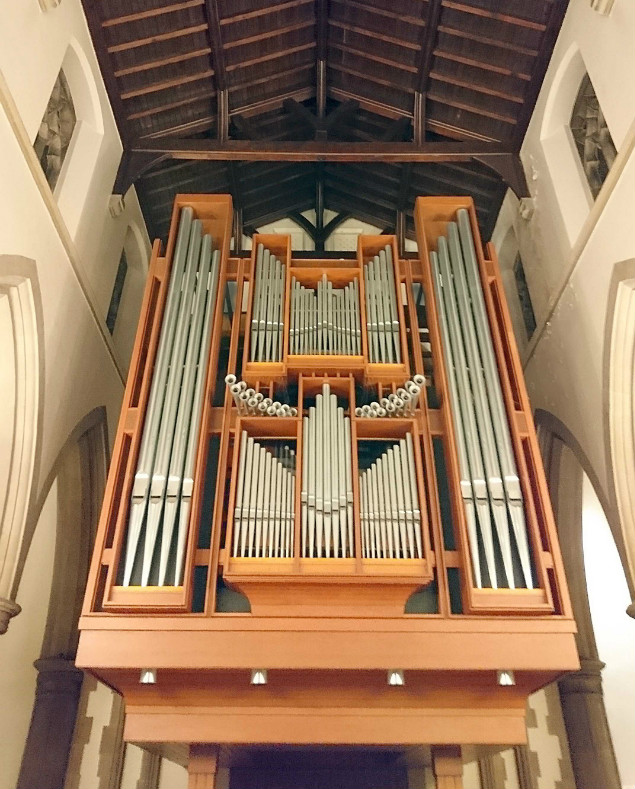
Organ for accompaniment
As the choir at Christ Church is still located in the original ‘Oxford Movement’ stalls, the location of the pipe organ is not ideal for accompaniment. This problem is dealt with – most admirably – by the Viscount Envoy 35 digital organ which has an experimental ‘French’ voicing.
In fact, in France it is common for many churches and cathedrals to have a similar organ ‘set-up’. The smaller East end ‘Orgue du Choeur’ acts as a predominantly accompanimental instrument whereas the large ‘Grand Orgue’ at the West end provides the solo organ elements and supports the congregation in responsorial music and plainsong sung ‘in alternatim’.
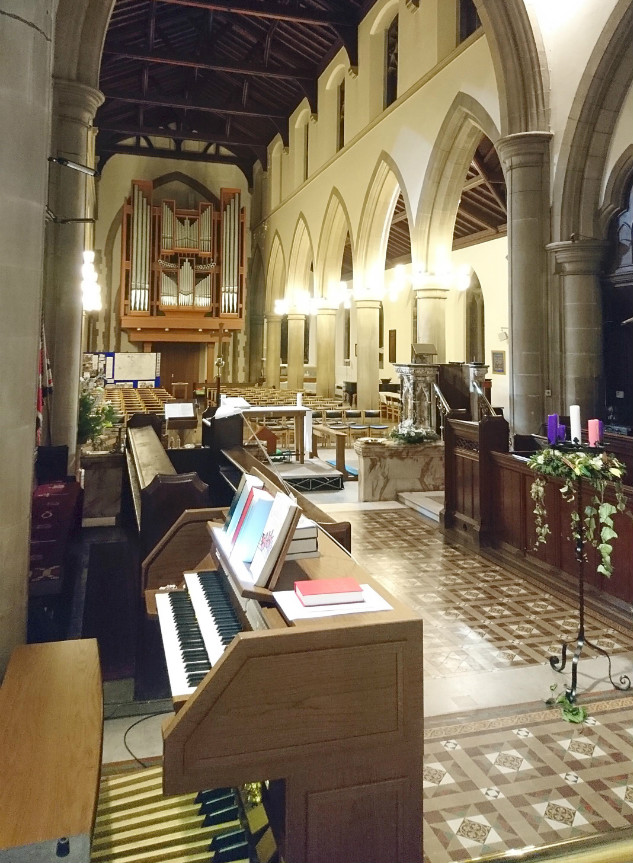
Introducing MIDI to the Pipe Organ
The Christ Church pipe organ has had a fair amount of work done to it over the past five years – much remedial addressing problems from its first installation in 1981 – and this has included a new digital transmission system. This is the electrical system which relays the actions of the organist to the pipes – all along a standard ‘cat-5’ computer network cable.
This new system has allowed us to introduce MIDI (Musical Instrument Digital Interface) to the organ. Not only can this interface be used with a record and playback (essential for when the organist wants a day off!!) but, it occurred to me, the possibility of linking the two organs together.
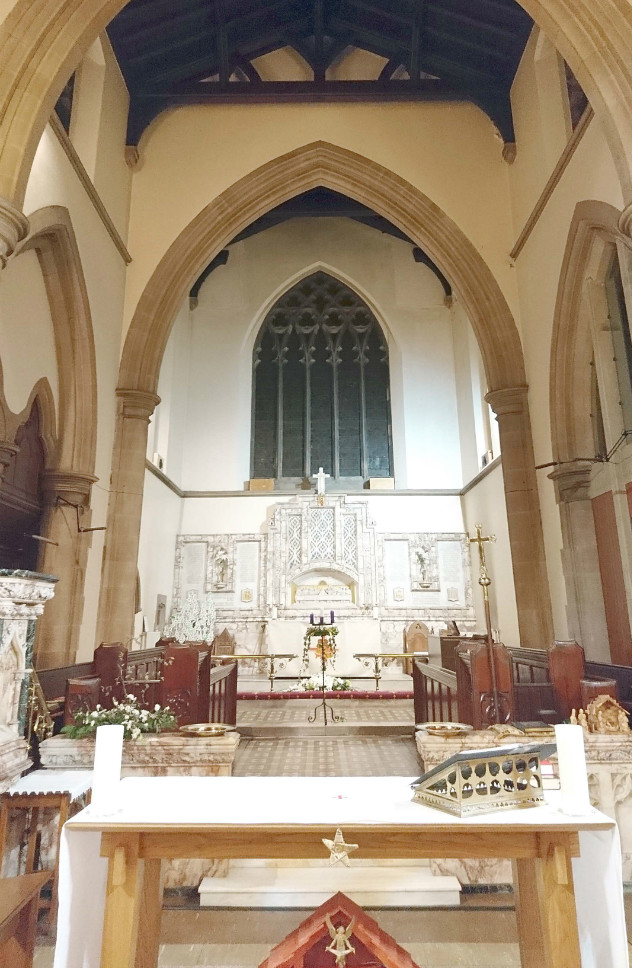
In the UK we have a few ‘Hybrid’ organs – instruments which use both pipes and digital sound production – but, to my knowledge, no pipe instruments which can be controlled from the console of a separate digital organ. Until now!
The creator of the digital transmission system of Christ Church’s pipe organ, John Ramsbottom of Sonic Services, has successfully managed to do just that and now the resources of the pipe organ (stops, keys, pedals and swell pedal) can be controlled from the Viscount console with the information sent down a MIDI cable from the Viscount to the pipe organ console. This was not quite as straightforward as it sounds, though….!
Getting the Organs to ‘talk’ to each other
Most digital organs (and other digital instruments for that matter) have their own manufacturer-specific internal MIDI codes known as ‘system exclusive messages’. Whilst this means that all the note (manuals and pedals) information sent out can be understood by a receiving instrument or sequencer, the stop codes are specific to that organ/manufacturer.
We had to work out a way of converting these system exclusive codes to something which the pipe organ could understand. This has been done by John who, with the help of the boffins in the technical lab at Viscount in Italy, has written some code which sits on a processor chip inside a small box inside the pipe organ console (roughly 3x3cm).
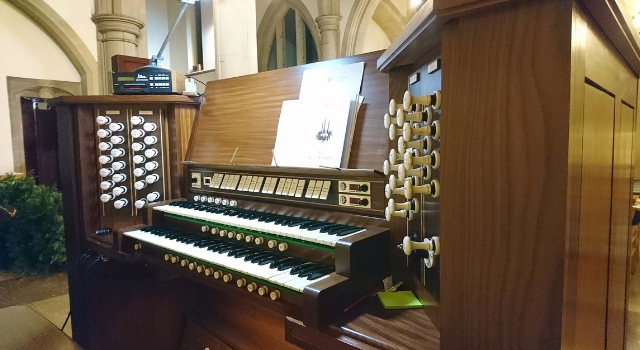
Therefore operating the Great Open Diapason tab on the Viscount activates the same stop on the pipe organ. The stop data is constantly being sent out from the Viscount but the pipe organ makes no sounds until the tabs to turn on the MIDI key information are activated. This way it is extremely simple to activate or deactivate the pipe organ. Silencing the sound of the Viscount is equally easy – just the press of a small switch deactivates the amplifiers.
As the pipe organ has approaching 50 stops and the Viscount has 35, there was obviously going to be some compromise but this has worked out well and some stops commonly used together have been configure to do just that. You can view a table of equivalents here – Midi table – Christ Church.
So why did we do this?
I hear you asking the fundamental question– why? Two reasons.
Firstly, it alleviates the need for 2 organists (or one organist to run between 2 consoles). Whilst everything could be accompanied by the Viscount, to successfully lead a large congregation, the organ needs to be played quite loudly to reach the back of the nave. Operating the pipes at the west end ensures that a balanced sound ensues.
Secondly, it was a bit of a ‘we can do this and be the first at doing it’ project. Whilst the linking of multiple instruments is commonplace in the recording studio or the live band setup, it isn’t in the organ world and, we’ve proved, it can be very successful!
Richard is a freelance Organ Consultant and Organist as well as Managing Director of Hauptwerk Made Easy Ltd and Soterios Design & Print. He is also Curator of the organ and Manchester Town Hall and DoM at Christ Church, West Didsbury.
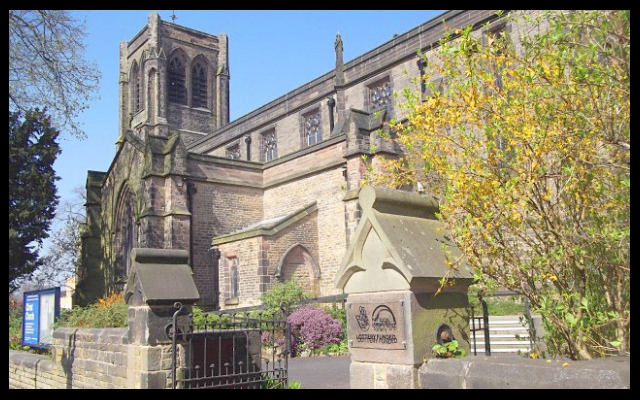



Brilliant. I think you should now compose a piece specially designed to exploit the unique possibilities that arise from this set up!
Excellent info, organ, church. Please send info re: that organ and Christ Church.
What happens when the pitch of both instruments vary? When it is very hot or very cold the pitch of the pipe organ varies, Will the Viscount do the same?
Mr. Lowe,
I enjoyed the information you shared on the Christ Church organ. As a freelance organ consultant and Managing Director of Hauptwerk Made Easy LTD I’m in hope you might be able to answer a question or questions regarding the possible use of Viscounts Choir Master on a custom built Virtual Hauptwerk 3 manual organ I had designed and built by Arnold “Custom Organ Works” in Minnesota.
I am not a musician or organist but have a great fondness for organs and organ music.
Unfortunately my church only has a part time organist that I help subsidize and I would l would like to hear it played more frequently!!
I currently have approximately 10 Samplesets loaded on it and am asking if there is any way that with the appropriate midi codes is there anyway the Viscount Choir Master could be interfaced with my organ so that it could Playback the hymns on the Choir Master??
Sincerely,
Keith Lilley
Shepherd of the Mountains Lutheran Church
Park City, uT